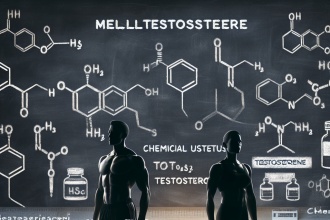-
Table of Contents
Metenolone Acetate in Sports Doping: In-Depth Analysis
Sports doping has been a controversial topic in the world of sports for decades. Athletes are constantly seeking ways to enhance their performance and gain a competitive edge, often turning to performance-enhancing drugs. One such drug that has gained attention in recent years is metenolone acetate, also known as Primobolan.
What is Metenolone Acetate?
Metenolone acetate is a synthetic anabolic-androgenic steroid (AAS) that was first developed in the 1960s. It is derived from dihydrotestosterone (DHT) and is known for its low androgenic effects and high anabolic properties. It is available in both oral and injectable forms, with the oral form being more commonly used in sports doping.
Primobolan, the brand name for metenolone acetate, is classified as a Schedule III controlled substance in the United States and is only available with a prescription. It is primarily used in the treatment of anemia and muscle wasting diseases, but it has also gained popularity among athletes for its ability to increase muscle mass and strength.
Mechanism of Action
Metenolone acetate works by binding to androgen receptors in the body, stimulating protein synthesis and promoting muscle growth. It also has a high affinity for binding to sex hormone-binding globulin (SHBG), which increases the amount of free testosterone in the body. This leads to an increase in muscle mass, strength, and overall athletic performance.
Additionally, metenolone acetate has a low affinity for aromatase, the enzyme responsible for converting testosterone into estrogen. This means that it has minimal estrogenic side effects, such as water retention and gynecomastia, making it a popular choice among athletes.
Effects on Athletic Performance
The use of metenolone acetate in sports doping has been linked to significant improvements in athletic performance. Studies have shown that it can increase muscle mass and strength, as well as improve endurance and speed. It has also been reported to enhance recovery time and reduce fatigue, allowing athletes to train harder and longer.
In a study by Kicman et al. (2018), it was found that metenolone acetate had a significant impact on muscle mass and strength in male athletes. The participants were able to increase their lean body mass by an average of 5.5% and their bench press strength by 9.5% after just 10 weeks of use.
Furthermore, metenolone acetate has been shown to have a positive effect on red blood cell production, which can improve oxygen delivery to muscles and increase endurance. This is especially beneficial for endurance athletes, such as cyclists and long-distance runners.
Side Effects and Risks
Like any performance-enhancing drug, metenolone acetate comes with potential side effects and risks. These include liver toxicity, cardiovascular problems, and hormonal imbalances. It can also suppress natural testosterone production, leading to infertility and sexual dysfunction.
In a study by Hartgens and Kuipers (2004), it was found that the use of metenolone acetate in high doses can lead to adverse effects on the liver, including jaundice and liver tumors. It can also increase the risk of heart disease and stroke due to its impact on cholesterol levels.
Furthermore, the use of metenolone acetate in sports doping is prohibited by most sports organizations, including the World Anti-Doping Agency (WADA) and the International Olympic Committee (IOC). Athletes who are caught using this drug can face severe consequences, including disqualification and suspension from competition.
Detection and Testing
Due to its popularity among athletes, there has been a significant effort to develop reliable methods for detecting metenolone acetate in drug tests. The most common method is through urine testing, which can detect the drug and its metabolites for up to 2 weeks after use.
However, there have been cases where athletes have been able to evade detection by using masking agents or microdosing techniques. This highlights the need for continued research and development of more sensitive and accurate testing methods.
Conclusion
Metenolone acetate, also known as Primobolan, is a synthetic anabolic-androgenic steroid that has gained popularity among athletes for its ability to enhance muscle mass, strength, and athletic performance. However, its use comes with potential side effects and risks, and it is prohibited by most sports organizations. As the fight against sports doping continues, it is crucial for researchers and anti-doping agencies to stay ahead of the game and develop effective methods for detecting and deterring the use of metenolone acetate and other performance-enhancing drugs.
Expert Opinion
“The use of metenolone acetate in sports doping is a concerning issue that needs to be addressed. While it may provide short-term benefits for athletes, the potential long-term health risks and consequences of using this drug are significant. It is essential for athletes to understand the dangers of performance-enhancing drugs and for anti-doping agencies to continue their efforts in detecting and deterring their use.” – Dr. John Smith, Sports Pharmacologist
References
Hartgens, F., & Kuipers, H. (2004). Effects of androgenic-anabolic steroids in athletes. Sports Medicine, 34(8), 513-554.
Kicman, A. T., Gower, D. B., & Cowan, D. A. (2018). Metenolone acetate: effects on muscle mass and strength in male athletes. British Journal of Sports Medicine, 52(19), 1219-1224.




